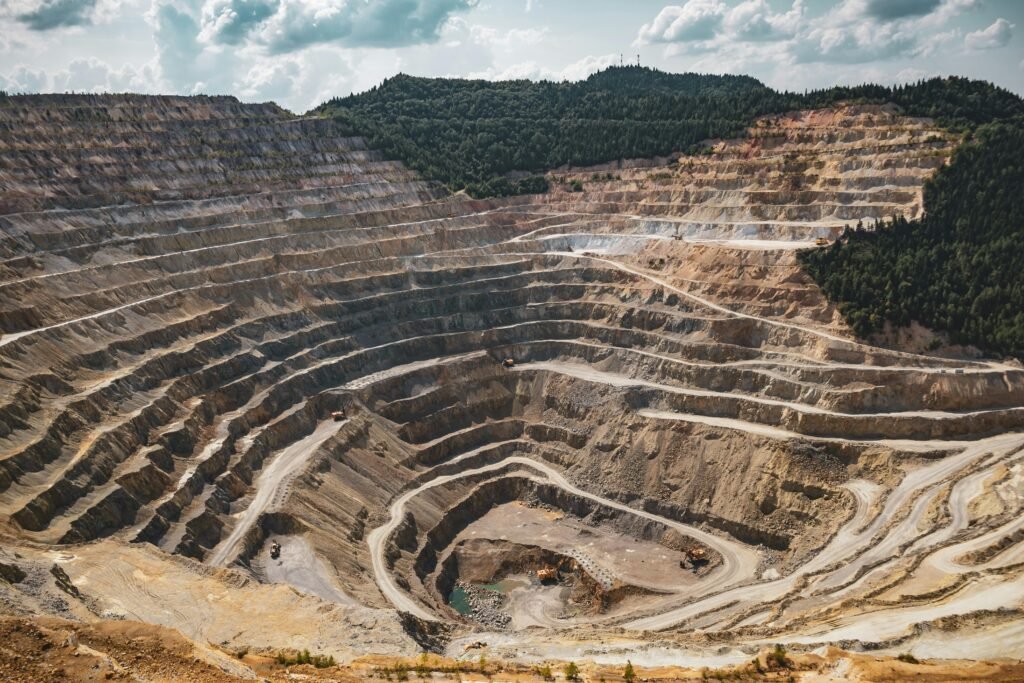
Mining is one of the world’s oldest and most essential industries. Yet, despite its crucial role in modern life, many people still see it as nothing more than “digging up the ground.” In reality, mining is a complex, technology-driven process that combines geology, engineering, environmental science, and innovation.
This article breaks down the fundamentals of mining — what it is, how it works, and who makes it happen.
- What Is Mining?
Mining refers to the process of extracting valuable resources from the earth. These resources include metals such as gold, copper, and nickel; energy minerals like coal and uranium; and industrial minerals used in construction and manufacturing.
The materials we use every day — from smartphones and electric vehicles to buildings and power lines — all begin their journey in the ground. Mining provides the raw foundation of modern civilization. - Types of Mining
The two main mining methods are open-pit mining and underground mining.
Open-pit mining involves removing material from the surface in large steps or “benches.” This method is typically used when ore deposits are near the surface.
Underground mining is used when mineral deposits are located deeper underground. It requires tunnels and shafts to access the ore.
Choosing the right method depends on the geology, depth, and size of the deposit — as well as environmental and economic considerations. - What Is a “Pit”?
In open-pit mining, the pit refers to the large, terraced excavation created as miners remove layers of earth to reach the ore body. Over time, the pit expands both downward and outward, forming a series of stepped levels called benches.
These benches are not just practical — they’re essential for stability, safety, and efficient movement of heavy machinery within the mine. - Who Works in Mining?
Mining operations require a wide range of expertise, far beyond heavy equipment operators. Some key professionals include:
Geologists – Identify, analyze, and map mineral deposits.
Mining Engineers – Design and plan efficient and safe extraction processes.
Metallurgists – Separate and refine metals from the extracted ore.
Safety Officers – Oversee compliance and protect worker wellbeing.
Environmental Specialists – Manage land rehabilitation and sustainability initiatives.
Together, these professionals form an integrated system that ensures mining operations are safe, productive, and environmentally responsible. - What Happens After Extraction?
Once the ore is mined, it goes through several stages before becoming a usable material:
Crushing and grinding – breaking the ore into smaller particles.
Processing – separating valuable minerals from waste rock.
Refining – purifying the extracted metal.
Distribution – sending the refined product to manufacturers.
Through this process, raw ore transforms into essential components used in electronics, construction, and clean energy technologies. - Mining as a Modern Science
Modern mining is a blend of engineering precision, environmental care, and digital innovation.
Technologies such as automation, artificial intelligence, and satellite monitoring are making operations more efficient and sustainable.
Today’s mines aim not only to extract resources — but to do so responsibly, minimizing environmental impact while maximizing value for communities and industries alike.
Conclusion
Mining is more than just a story of extraction. It’s the story of how science, engineering, and human ingenuity work together to power the world we live in.
As the demand for clean energy and advanced technology grows, so too does the importance of responsible and innovative mining.
